Wet Start To May And 2019
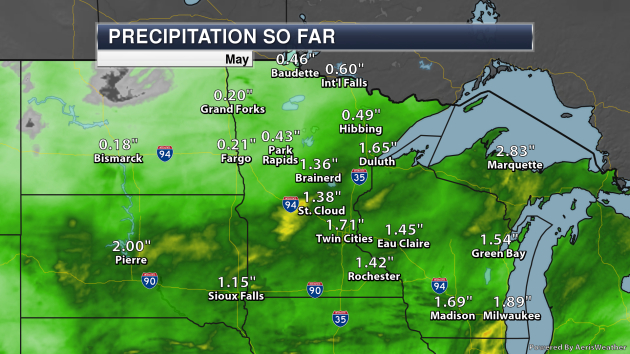
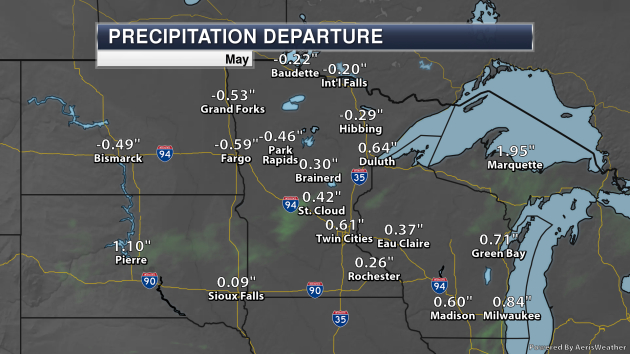
With data only through the first 10 days of the month (through Friday), it’s already been a wet month across central and southern Minnesota. So far this month the Twin Cities has received 1.71″ of rain, 0.61″ above average. Now, it must be noted that May is generally our fourth wettest month in the Twin Cities with an average of 3.36″ falling. However, we can see precipitation totals of at least an inch so far this month stretching all the way up to Duluth. Precipitation has been below average so far this month from Grand Forks and Fargo to International Falls and Hibbing, however, there is plenty of time to make up the deficit.
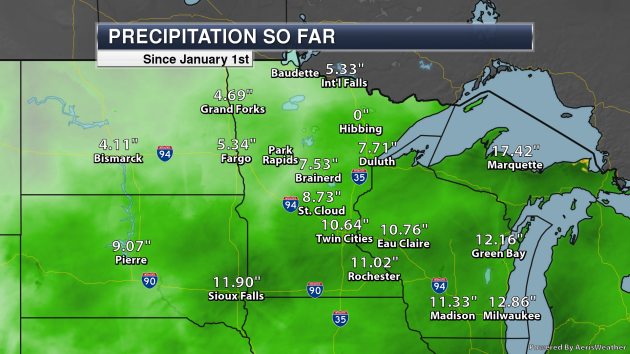

Of course, the heavier rain already observed across parts of the state adds to our already wet year to date as well. In the Twin Cities, we’ve already topped 10″ of precipitation so far this year. The 10.64” that has fallen is the 11th wettest start to the year on record. We would have only needed another 0.01” through Friday to tie tenth place (10.65″ in 2014). The precipitation so far this year in the Twin Cities is 3.32″ above average. Every climate location that reports yearly precipitation across the state is running above average so far this year.
_______________________________________________
Record Snow Already In Duluth This Month

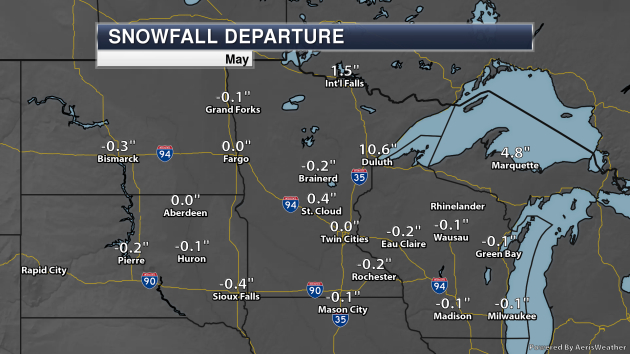
While the Twin Cities was “lucky” enough to pick up a trace of snow from that rainy system Wednesday Night, Duluth ended up with 10.6″ of heavy snow. That brought their monthly total so far to 10.9″ of snow, shattering the previous May record of 8.1″ set back in 1954. The 8.3″ of snow that fell May 8th is also the only time that at least a half a foot of snow has fallen in a climatological day during the month of May in Duluth – the previous high had been 5.5″ back on May 10th, 1902. Let’s all hope we don’t see any more snow until at least November.
_______________________________________________
National Weather Forecast

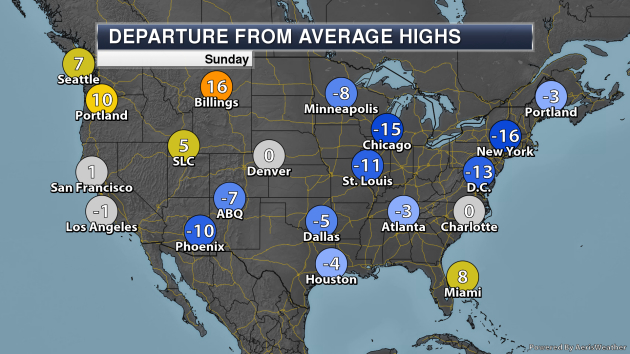
On Sunday, showers and storms will continue from parts of the western Gulf Coast into the Southeast with a slowly moving cold front. Rain associated with this will also start to spread into parts of the Northeast. An area of low pressure could help spark off a few showers and a rumble or two of thunder in the upper Midwest. Another area of low pressure will allow for some showers and storms in the Four Corners and Desert Southwest, stretching up to northern California. Some snow may mix in across parts of Colorado and New Mexico.
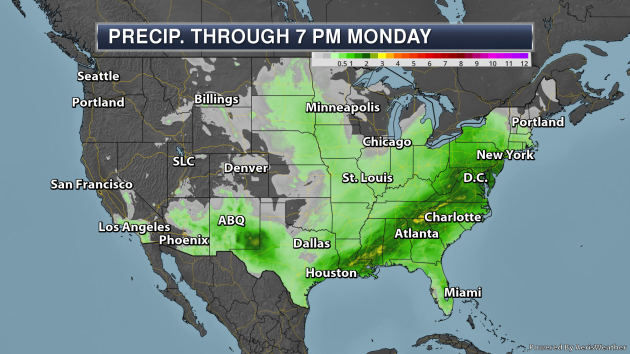
At least 1-3″ of rain will be possible from parts of the Southeast into the Mid-Atlantic and Northeast through the rest of the weekend into the beginning of the work week.
_______________________________________________
How Hot Weather Affects Your Car Battery and What to Do About It
More from Consumer Reports: “Summer heat is tougher on car batteries than winter’s chill. It may seem counterintuitive, but higher temperatures have a greater impact on the power-generating chemistry inside. And it’s not just about air temperature. Hot summer temps drive up the heat under the hood and accelerate the onset of battery failure. As a result, many motorists wind up stuck along the roadside in the summer. AAA reports that it responded to 1.8 million battery-related service calls in the summer of 2018. “Routine inspection is as important for the battery as it is for the rest of the car,” says John Banta, Consumer Reports’ lead battery tester. To avoid being stranded, owners should be proactive about servicing and replacing their car’s battery, Banta says.”
At Baltimore’s National Aquarium, Climate Change Presents Challenges Inside And Out
More from NPR: “Three years ago, the National Aquarium in Baltimore made a big announcement. After a public backlash against marine animal parks brought on by the documentary Blackfish, the aquarium decided to move its prized pod of dolphins to a first-of-its-kind sanctuary. They set a 2020 deadline to find the perfect spot either off the coast of Florida or in the Caribbean — one where the water is warm, the area is protected and the climate is calm. But now, that 2020 move is no longer realistic, according to John Racanelli, the aquarium’s CEO. And that’s due in large part to a factor beyond its control: climate change. Of the more than 50 sites the aquarium has surveyed, so far not one has been deemed safe enough from things like fierce storms and algal blooms, both projected to worsen as temperatures rise.”
How Weeds Help Fight Climate Change
More from the BBC: “More than 60 years ago, when he was a child, farmer Peter Andrews saw his first dust storm. He still remembers it. “The noise was horrendous,” he says. “We hid in the house waiting for it to pass. The whole sky was dark. And the damage we saw the next day was even more terrible.” The wind had ripped many of the trees on his family’s property completely bare. Some of their horses and cattle asphyxiated, unable to breathe in the dust. That early experience has led him to a particular calling: trying to regenerate Australia’s land, since dust storms occur in hot, arid regions where there is little vegetation to anchor the soil.”
_______________________________________________
Thanks for checking in and have a great Sunday! Don’t forget to follow me on Twitter (@dkayserwx) and like me on Facebook (Meteorologist D.J. Kayser)!
– D.J. Kayser


